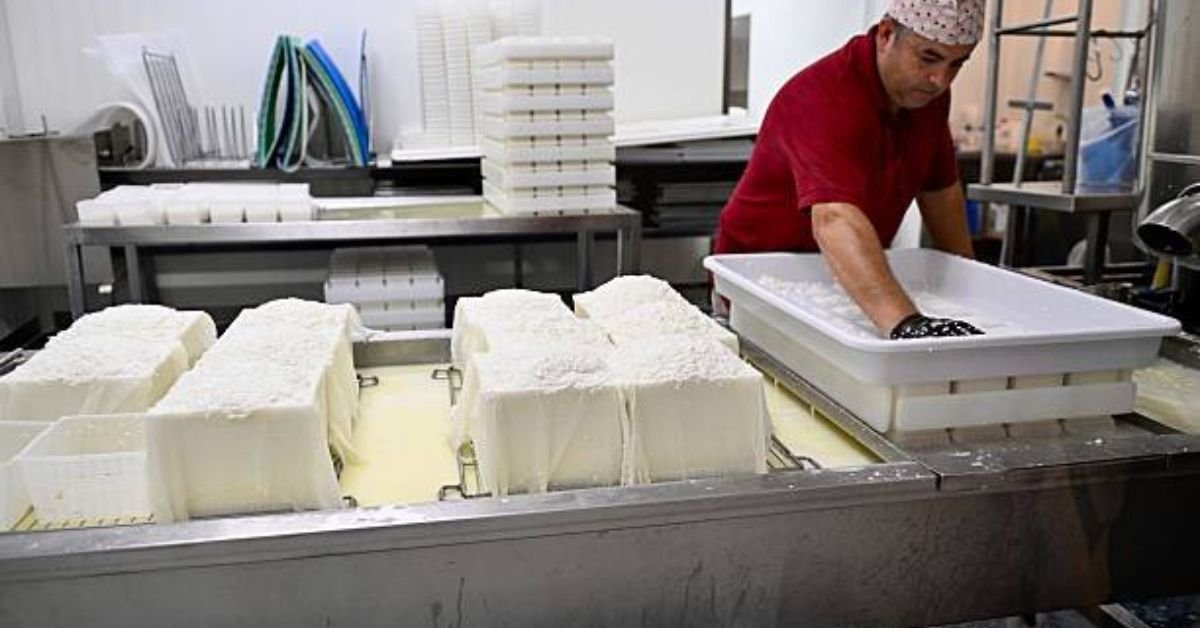BLOG
Deep Clean, Big Impact: The Power of Commercial Carpet Cleaners

Deep Clean, Big Impact Carpets in commercial settings experience an entirely different level of wear and tear compared to residential environments. Daily foot traffic brings in more than just visible dirt; it grinds in microscopic debris, dust mites, and even airborne pollutants that settle into carpet fibers. Over time, these contaminants don’t just diminish the look of the flooring—they contribute to poor indoor air quality and can harbor bacteria or allergens that affect employees and customers alike.
This is where high-performance solutions like carpet extractors and low-moisture cleaning machines come into play. Unlike vacuuming or spot-cleaning, these tools are designed to perform deep carpet cleaning on a scale suitable for large facilities, handling thousands of square feet in a single session.

Types of Commercial Carpet Cleaners and Their Functions
There’s no one-size-fits-all when it comes to professional carpet cleaning. The right machine depends on the setting, level of soil, and type of carpet.
Carpet extractors, for instance, work by injecting hot water mixed with cleaning solution deep into the fibers and then extracting it along with embedded dirt. These are especially effective in areas where deep cleaning is required, such as hotel corridors or medical offices.
In contrast, low-moisture encapsulation machines apply a cleaning compound that crystallizes around dirt particles, which are then vacuumed away once dry. This method reduces drying time significantly, making it ideal for facilities that require minimal disruption.
For expansive areas, truck-mounted carpet cleaners—often used by professional cleaning services—deliver unmatched power. These units are favored for their ability to heat water to higher temperatures, increase pressure, and provide stronger suction, ensuring a more thorough cleanse.
Why Commercial Settings Require Specialized Cleaning Equipment
In a typical commercial facility, the amount of soil and stains that accumulate daily can be staggering. Think about the variety of substances that end up on office carpets—spilled coffee, ink, food particles, mud from shoes, and more. Residential-grade shampooers simply aren’t built to manage that volume or intensity of cleaning.
Using an industrial carpet cleaner ensures that deeper fibers are reached and treated. More importantly, most commercial models are designed with CRI (Carpet and Rug Institute) certification, ensuring that they meet performance and environmental standards. Machines with this seal have been tested for soil removal, water extraction efficiency, and preservation of carpet appearance.
Top Brands Leading the Charge
When it comes to trusted names in the commercial cleaning industry, a few stand out. Bissell BigGreen, Rug Doctor Pro, and Kärcher offer a range of high-efficiency carpet cleaners tailored to commercial needs. These machines often feature dual-tank systems to keep clean and dirty water separate, adjustable pressure settings for different carpet types, and even specialized attachments for upholstery cleaning and tight corners.
Modern commercial units are also designed for operator comfort, with ergonomic handles, easy-to-read control panels, and whisper-quiet motors for environments where noise control matters.
Deep Carpet Cleaning as Preventative Maintenance
Regularly deep-cleaning carpets isn’t just about appearance—it plays a crucial role in extending carpet life. Commercial carpet is a significant investment, and when not properly maintained, it can degrade faster, leading to expensive replacement costs.
Using a steam carpet cleaner or hot-water extractor every 3–6 months can help eliminate embedded dirt before it causes fiber breakdown. Furthermore, many cleaning experts recommend a rotational cleaning schedule, especially for buildings divided into zones based on foot traffic intensity. High-traffic areas like lobbies or hallways may require monthly attention, while private offices can be serviced quarterly.
Eco-Friendly Cleaning and Safe Chemical Use
With increasing focus on sustainability, many commercial cleaners are opting for green-certified solutions that are effective yet non-toxic. These cleaning agents, often biodegradable and free of harsh solvents, are safe for use in schools, hospitals, and environmentally conscious offices. Combined with efficient machines that limit water usage and energy consumption, eco-conscious carpet cleaning is now a viable, responsible choice.
Cost Savings and ROI Over Time
Although the upfront cost of purchasing a commercial carpet cleaner might seem steep, the return on investment can be significant. Outsourcing cleaning tasks to professionals often adds up over time, especially when factoring in frequency. In contrast, owning a machine allows businesses to clean as needed without scheduling conflicts or ongoing service fees.
Moreover, well-maintained carpets reduce the need for premature replacement, and employees benefit from a cleaner, healthier work environment, potentially reducing sick days caused by allergen exposure.

Frequently Asked Questions (FAQs)
Q1: What’s the best commercial carpet cleaner for large offices or schools?
A: Machines like the Bissell BigGreen Commercial and Kärcher’s walk-behind extractors are excellent for large areas due to their tank capacity, wide cleaning paths, and efficient suction.
Q2: How often should commercial carpets be cleaned?
A: It depends on foot traffic. High-traffic zones might need monthly deep cleaning, while low-traffic areas can be cleaned every 3–6 months.
Q3: Are steam cleaners better than carpet extractors?
A: Both have advantages. Steam cleaners sanitize effectively with heat, while extractors offer more power for water removal and stain extraction.
Q4: Can a commercial carpet cleaner remove old, set-in stains?
A: Yes, most machines can handle old stains, especially when used with appropriate pre-treatment solutions and high-heat extraction.
Q5: What is the drying time after using a commercial carpet cleaner?
A: Drying time varies from 2 to 8 hours depending on machine type, carpet thickness, and humidity. Low-moisture methods dry fastest.
Q6: Can these machines be used for upholstery cleaning too?
A: Many commercial models come with attachments specifically designed for upholstery, making them versatile for use on office furniture.
Conclusion
Cleanliness speaks volumes in the professional world, and nothing detracts from a company’s image more than stained or dingy flooring. Investing in a commercial carpet cleaner is more than a practical solution—it’s a strategic decision that enhances the visual appeal of a workspace, improves indoor air quality, and protects long-term flooring investments.
BLOG
Besos Meaning: A Journey into the Heart of Latin American Culture

Besos is derived from the Spanish language, where it translates to “kisses.” However, the meaning of besos goes beyond a simple translation. It’s a term that encompasses a range of emotions, from affection and love to passion and intimacy.
The Cultural Significance of Besos
In many Latin American cultures, besos are an integral part of daily life. They’re a way to show affection, greet one another, and express love. The cultural significance of besos is deeply rooted in the values of warmth, hospitality, and closeness.

The Different Types of Besos
While the term “besos” is often associated with romantic love, it’s not the only context in which it’s used. Besos can be exchanged between family members, friends, and even as a greeting or farewell.
- A beso on the cheek is a common greeting in many Latin American countries.
- A beso on the lips is often reserved for romantic partners or loved ones.
- A beso on the forehead or hand can be a sign of respect, affection, or blessing.
“I remember my abuela giving me besos on the forehead every night before bed. It was a special moment that made me feel loved and safe.”
The Emotional Significance of Besos
Besos are more than just a physical gesture; they’re a way to convey emotions and connect with others. The act of giving or receiving a beso can evoke feelings of comfort, security, and love.
FAQs
Q: What is the meaning of besos in Spanish?
A: Besos is the Spanish word for “kisses.” It’s a term used to describe a range of affectionate gestures, from romantic kisses to friendly pecks on the cheek.
Q: How do you use besos in a sentence?
A: You can use besos in a sentence to express affection or love, such as “Dale besos a tu familia de mi parte” (Give your family a kiss from me).
Q: What is the cultural significance of besos in Latin America?
A: Besos play a significant role in Latin American culture, where they’re used to show affection, greet one another, and express love.
Q: Can besos be used in non-romantic contexts?
A: Yes, besos can be used in non-romantic contexts, such as between family members or friends. It’s a way to show affection and closeness.
Conclusion
Besos, we discover that it’s more than just a word – it’s a way to connect with others and express our emotions. Whether you’re looking to deepen your understanding of Latin American culture or simply want to show affection to those around you, besos is a term that’s worth exploring further.
BLOG
Luxury Cruise Passengers: Staying Safe on the High Seas

Luxury cruises often traverse through exotic waters, some of which are notorious for piracy. The Gulf of Aden, the Indian Ocean, and parts of Southeast Asia are known hotspots where pirates have been active. These areas are often near popular cruise routes, putting luxury cruise passengers at risk.
Piracy Tactics: How Pirates Target Luxury Cruises
Pirates have become increasingly sophisticated, using tactics like GPS spoofing and fake ship identities to target unsuspecting vessels. They often look for easy prey, such as slow-moving ships or those with lax security. Luxury cruises, with their high-value passengers and cargo, can be attractive targets.
The Human Impact: Stories from Luxury Cruise Passengers
“I was on a luxury cruise in the Gulf of Aden when we received a piracy warning. The crew immediately took action, increasing security measures and altering our course. It was a harrowing experience, but thanks to their quick response, we were safe.” The fear and uncertainty that come with a piracy warning can be unsettling, but being prepared and knowing what to expect can make all the difference.
Staying Safe: Precautions and Measures for Luxury Cruise Passengers
To minimize the risk of piracy, luxury cruise lines have implemented various security measures. These include:
- Traveling in convoys or with naval escorts
- Implementing advanced security systems, such as radar and surveillance cameras
- Conducting regular security drills and training for crew members
- Increasing security personnel on board

What Luxury Cruise Passengers Can Do
While cruise lines take necessary precautions, passengers can also play a role in staying safe. Being aware of the risks and taking simple precautions, such as staying informed about piracy hotspots and following crew instructions, can help minimize the risk of piracy.
Piracy Warning Systems: How Luxury Cruises Stay Ahead
Luxury cruise lines use advanced piracy warning systems to stay informed about potential threats. These systems provide real-time updates on piracy hotspots and suspicious activity, enabling crews to take proactive measures to avoid danger.
The Role of Technology in Piracy Prevention
Technology plays a vital role in preventing piracy. Advanced systems, such as satellite tracking and AI-powered surveillance, help cruise lines stay one step ahead of pirates. These technologies enable crews to respond quickly and effectively in the event of a piracy warning.
FAQs
Q: What should I do if I receive a piracy warning on my luxury cruise?
A: If you receive a piracy warning, follow the instructions of your crew immediately. They are trained to handle such situations and will take necessary precautions to ensure your safety.
Q: Are luxury cruises more vulnerable to piracy than other types of cruises?
A: Luxury cruises can be attractive targets for pirates due to their high-value passengers and cargo. However, luxury cruise lines often have advanced security measures in place to minimize the risk.
Q: How can I stay informed about piracy hotspots and safety measures on my luxury cruise?
A: Your cruise line will provide you with information about piracy hotspots and safety measures in place. You can also stay informed through government travel advisories and industry reports.
Q: Can I travel safely on a luxury cruise despite the risk of piracy?
A: Yes, with the right precautions and awareness, you can travel safely on a luxury cruise. Cruise lines take piracy seriously and have measures in place to protect passengers.
Conclusion
Luxury cruise, staying informed about piracy risks and taking necessary precautions can help ensure a safe and enjoyable journey. By understanding the risks and being aware of the measures in place to prevent piracy, you can relax and enjoy your time on board.
BLOG
Mandarin for Mandarin: Tips and Tricks for Language Learners

Mandarin can be a rewarding and enriching experience, especially when you focus on learning Mandarin for Mandarin. By doing so, you can:
- Improve your pronunciation and intonation
- Develop a deeper understanding of Chinese culture and history
- Enhance your career opportunities in China or with Chinese companies
Immersing Yourself in the Language
One of the most effective ways to learn Mandarin for Mandarin is to immerse yourself in the language. This can be done by:
- Watching Chinese movies and TV shows
- Listening to Chinese music and podcasts
- Speaking with native Mandarin speakers
For example, “I started watching Chinese dramas with English subtitles and it really helped me improve my listening skills and get used to the natural flow of the language.”

Tips for Learning Mandarin for Mandarin
When it comes to learning Mandarin for Mandarin, there are several tips to keep in mind:
- Focus on tones and pronunciation
- Practice speaking and listening regularly
- Use language learning apps and resources
Using Language Learning Apps
There are many language learning apps available that can help you learn Mandarin for Mandarin. Some popular options include:
- Duolingo
- HelloTalk
- Pleco
FAQs
Q: What is the best way to learn Mandarin for Mandarin?
A: The best way to learn Mandarin for Mandarin is to immerse yourself in the language by watching Chinese media, speaking with native speakers, and practicing regularly.
Q: How can I improve my Mandarin pronunciation?
A: You can improve your Mandarin pronunciation by listening to native speakers, practicing speaking regularly, and using language learning apps that focus on pronunciation.
Q: What are some common challenges when learning Mandarin for Mandarin?
A: Some common challenges include mastering tones, understanding grammar and syntax, and finding opportunities to practice speaking and listening.
Q: Can I learn Mandarin for Mandarin on my own?
A: Yes, you can learn Mandarin for Mandarin on your own with the right resources and motivation. However, it’s also helpful to work with a language exchange partner or tutor to get feedback and support.
Conclusion
Mandarin for Mandarin requires dedication, persistence, and the right resources. By immersing yourself in the language, practicing regularly, and using the right language learning tools, you can achieve fluency and unlock new opportunities. Whether you’re a beginner or advanced learner, there’s always room to improve and refine your Mandarin skills.
-

 TECH6 months ago
TECH6 months agoApple iPhone 17: Official 2025 Release Date Revealed
-

 BLOG6 months ago
BLOG6 months agoUnderstanding the ∴ Symbol in Math
-

 EDUCATION6 months ago
EDUCATION6 months agoHorizontal Translation: How to Shift Graphs
-

 EDUCATION6 months ago
EDUCATION6 months agoUsing the Quadratic Formula
-

 EDUCATION6 months ago
EDUCATION6 months agoThe Meaning of an Open Circle in Math Explained
-

 HEALTH6 months ago
HEALTH6 months agoGoodNever: Wellness, Simplified
-

 EDUCATION6 months ago
EDUCATION6 months agoWhy Does m Represent Slope?
-

 EDUCATION6 months ago
EDUCATION6 months agoHow to Solve Quadratic Equations 2
